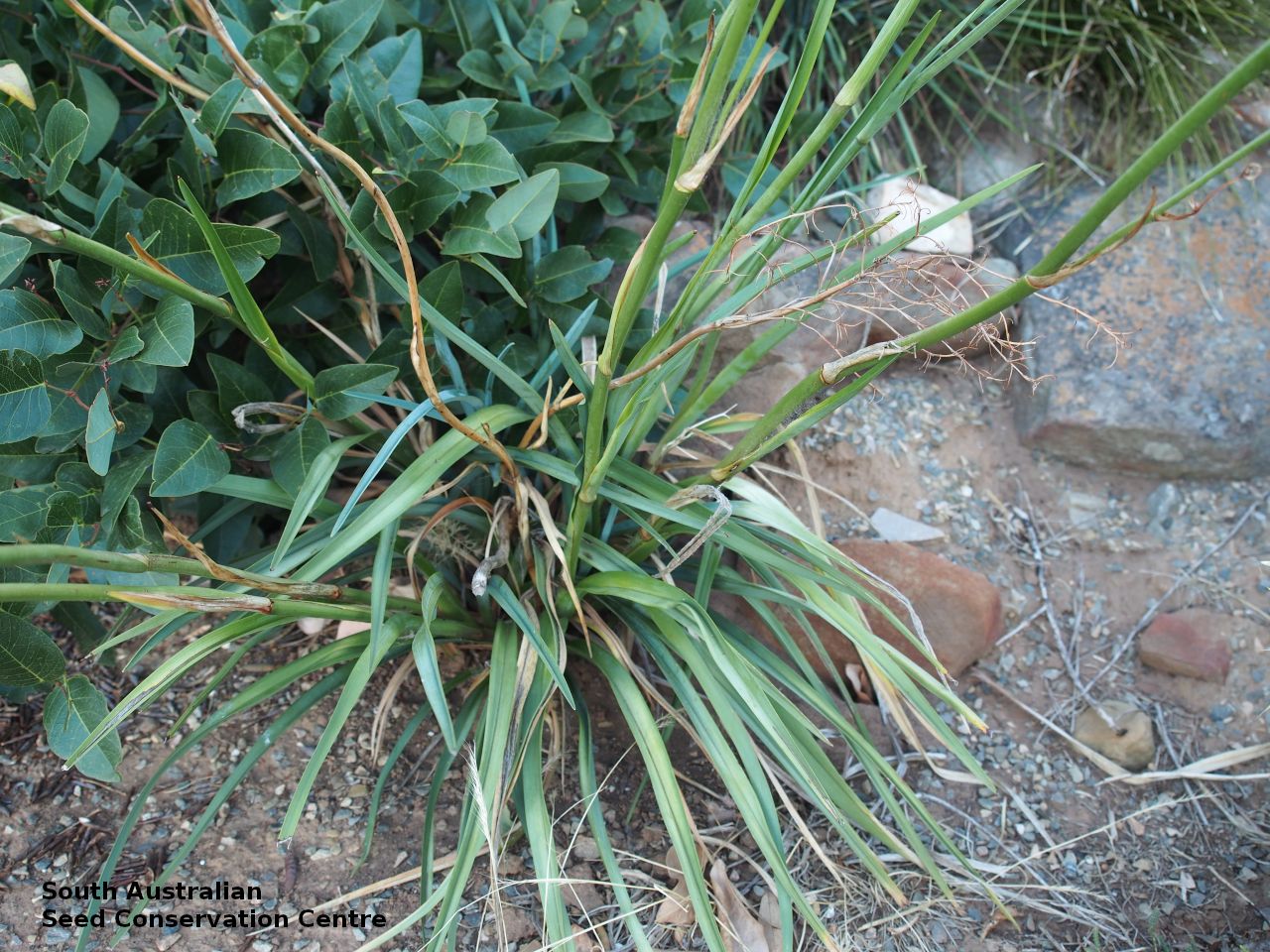

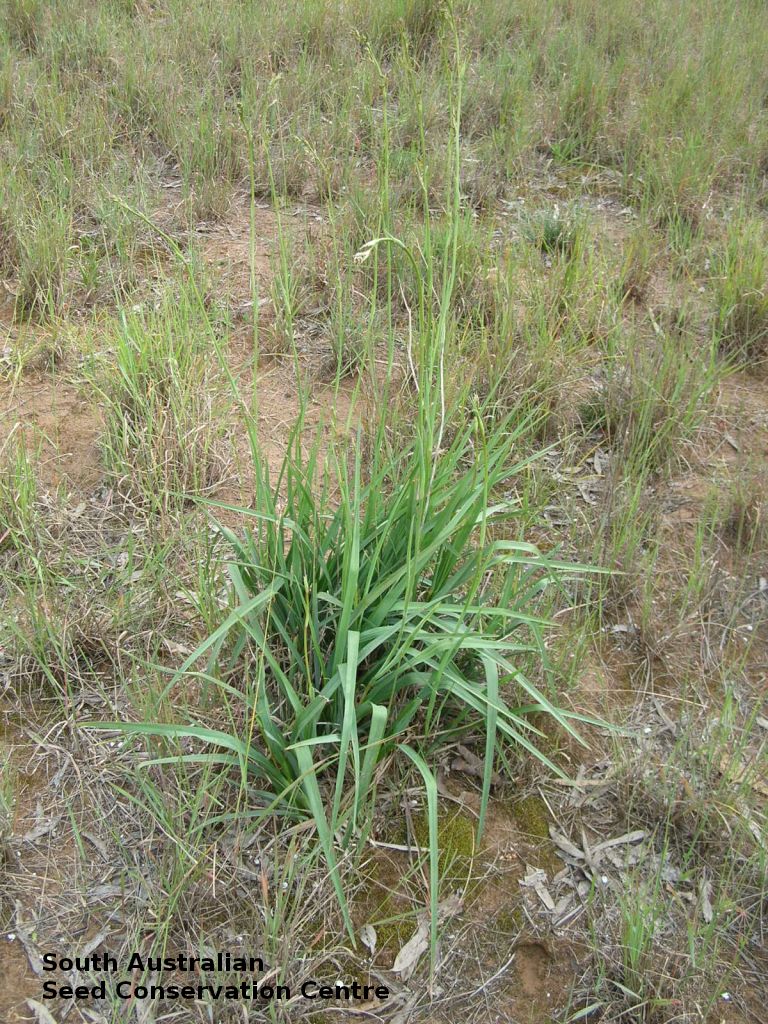
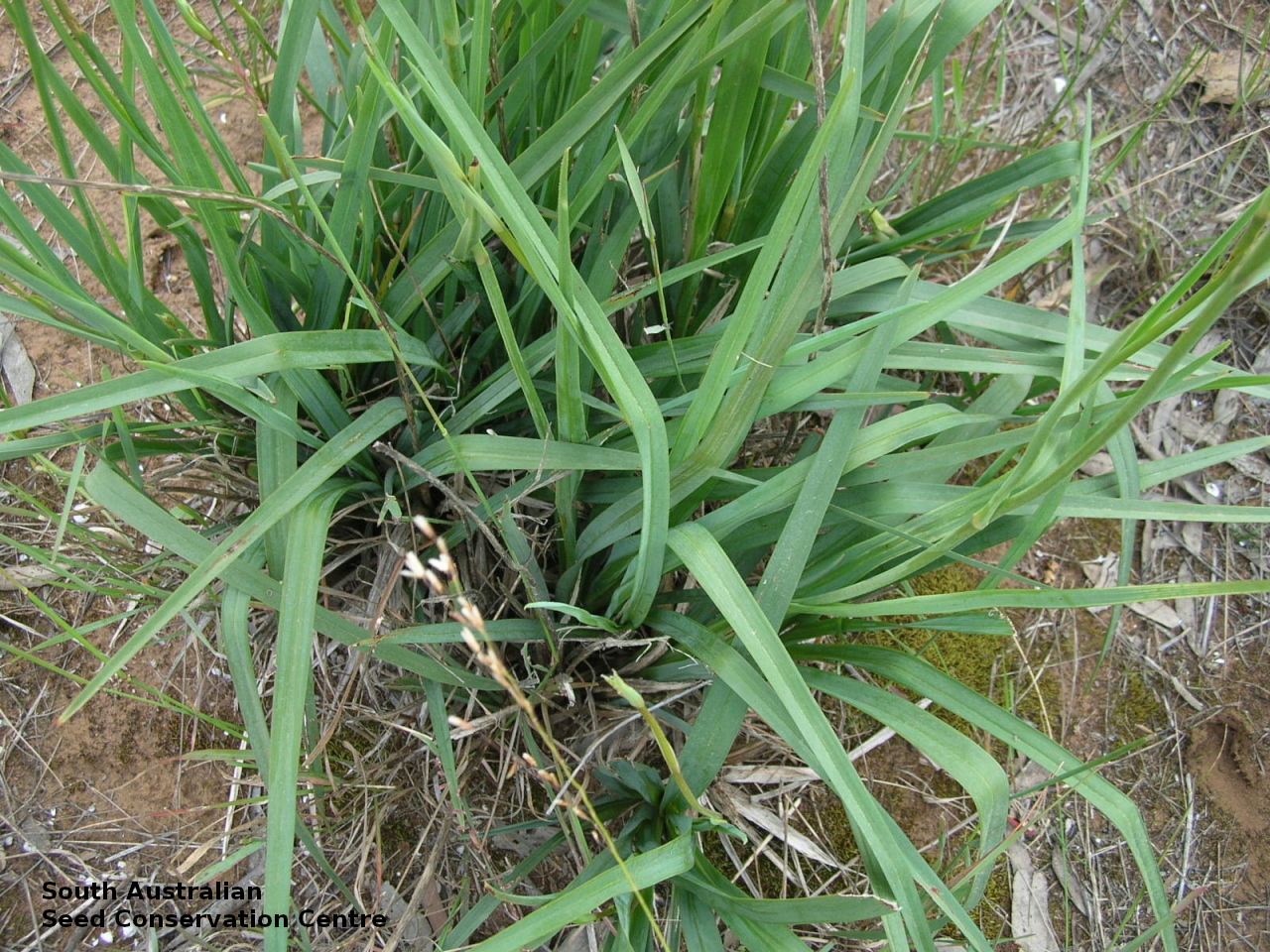
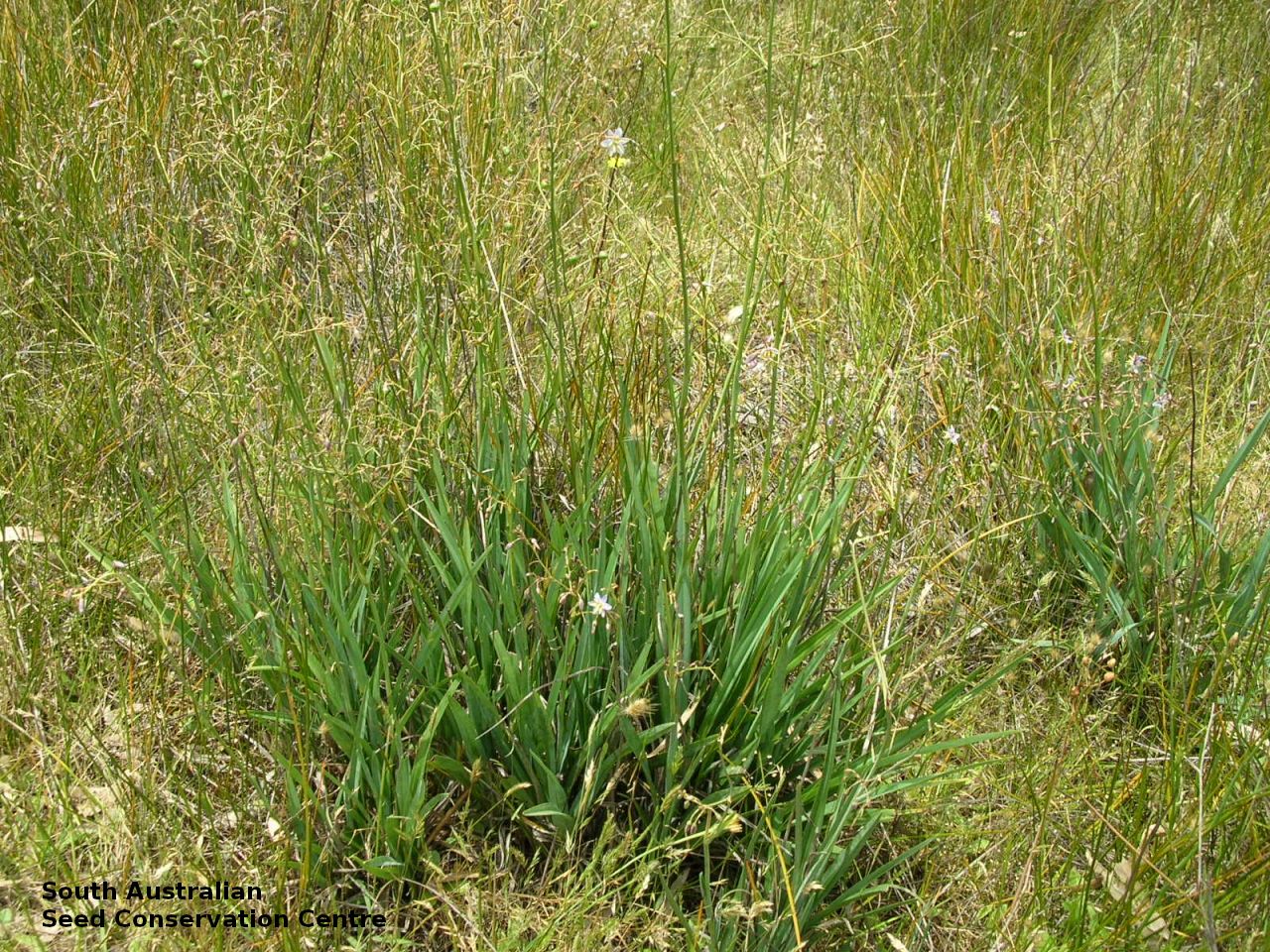
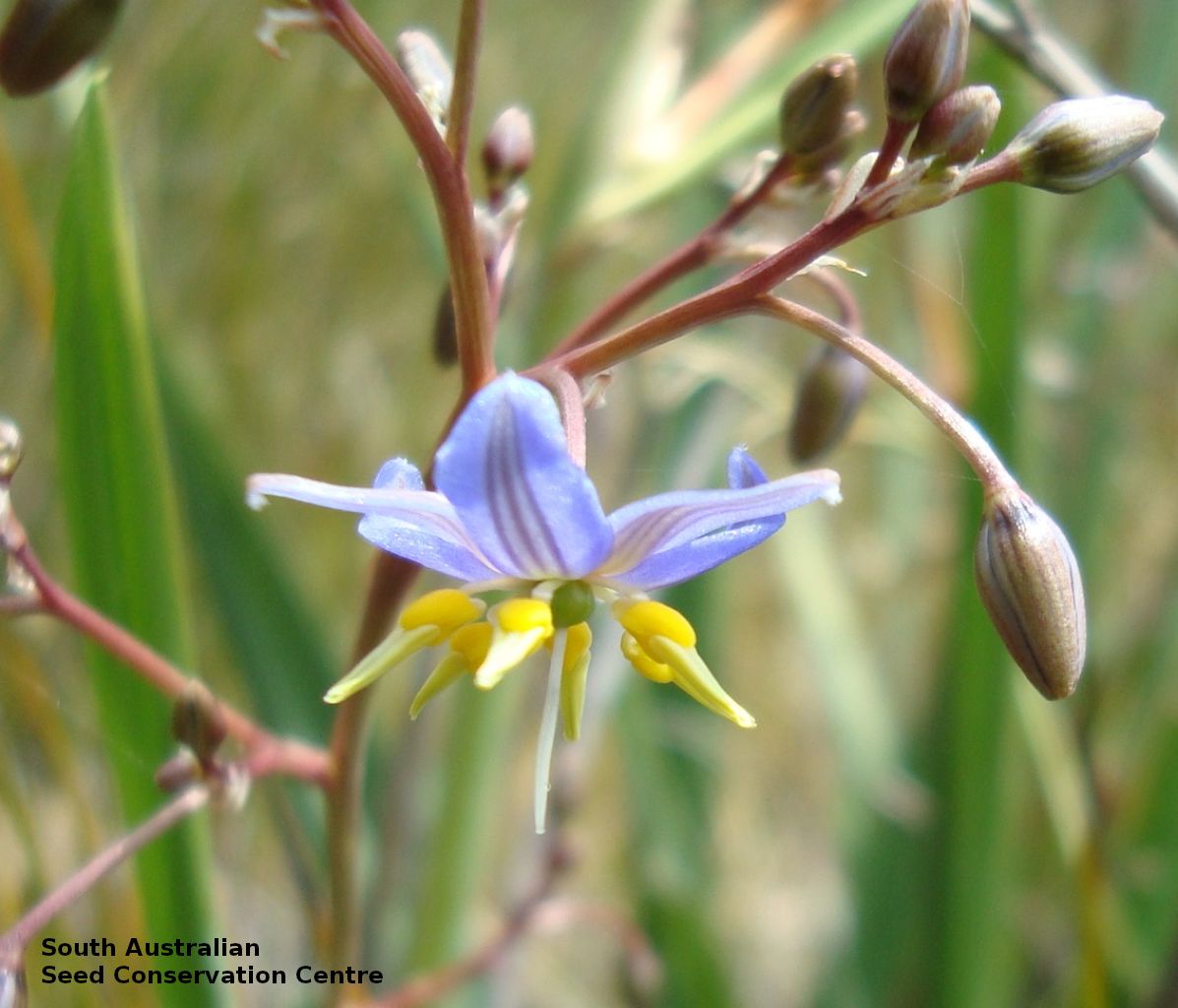
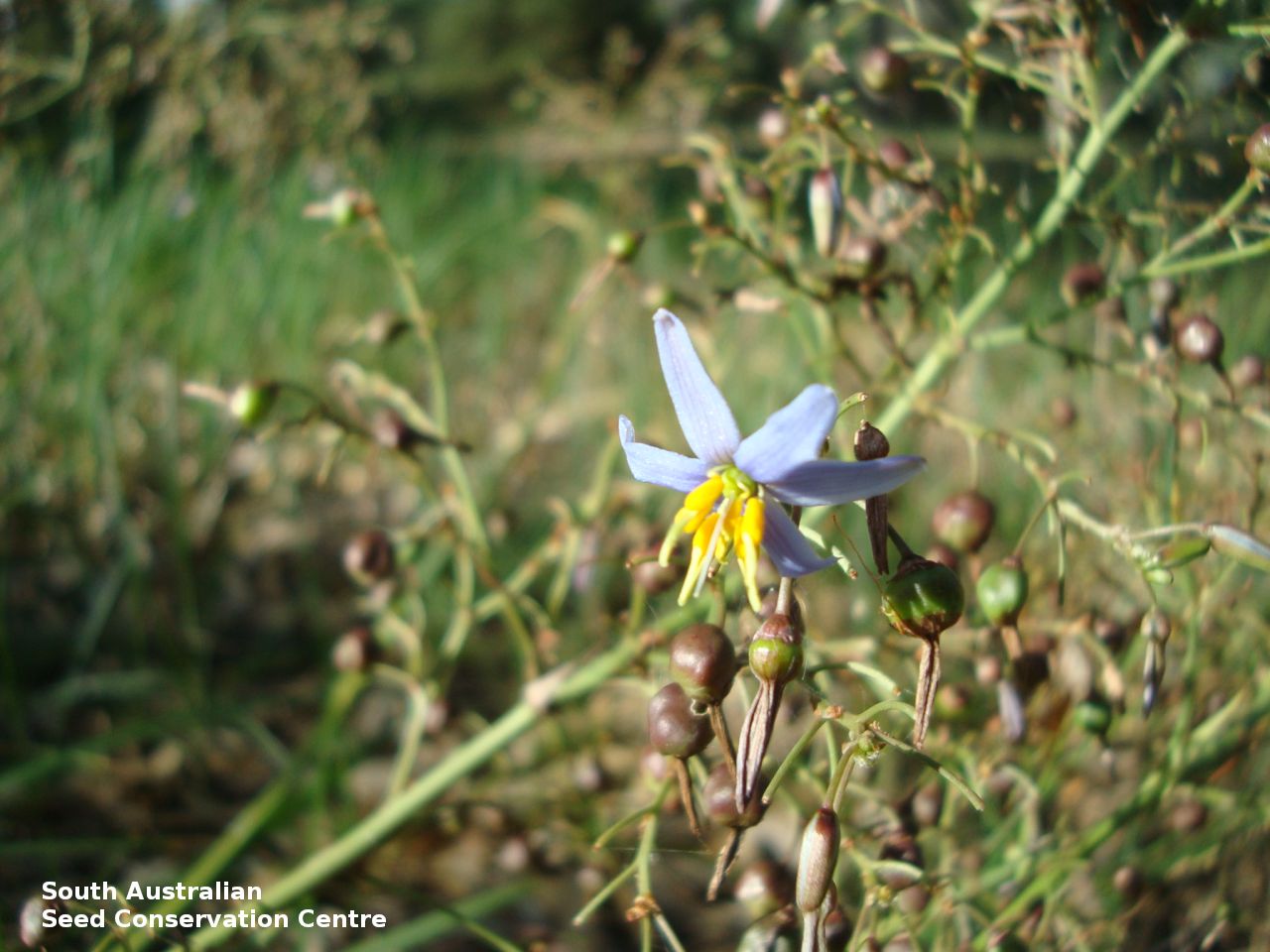
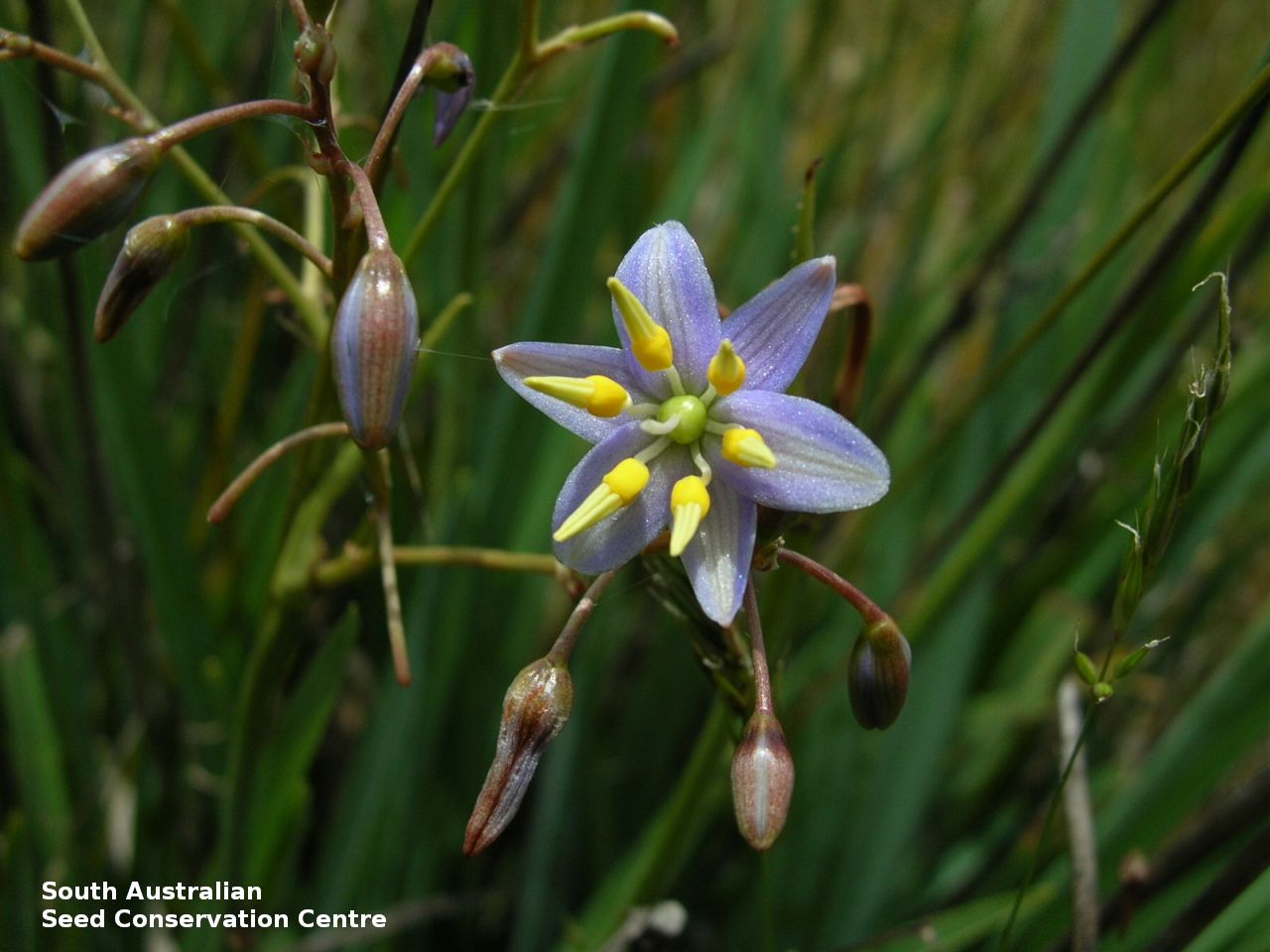
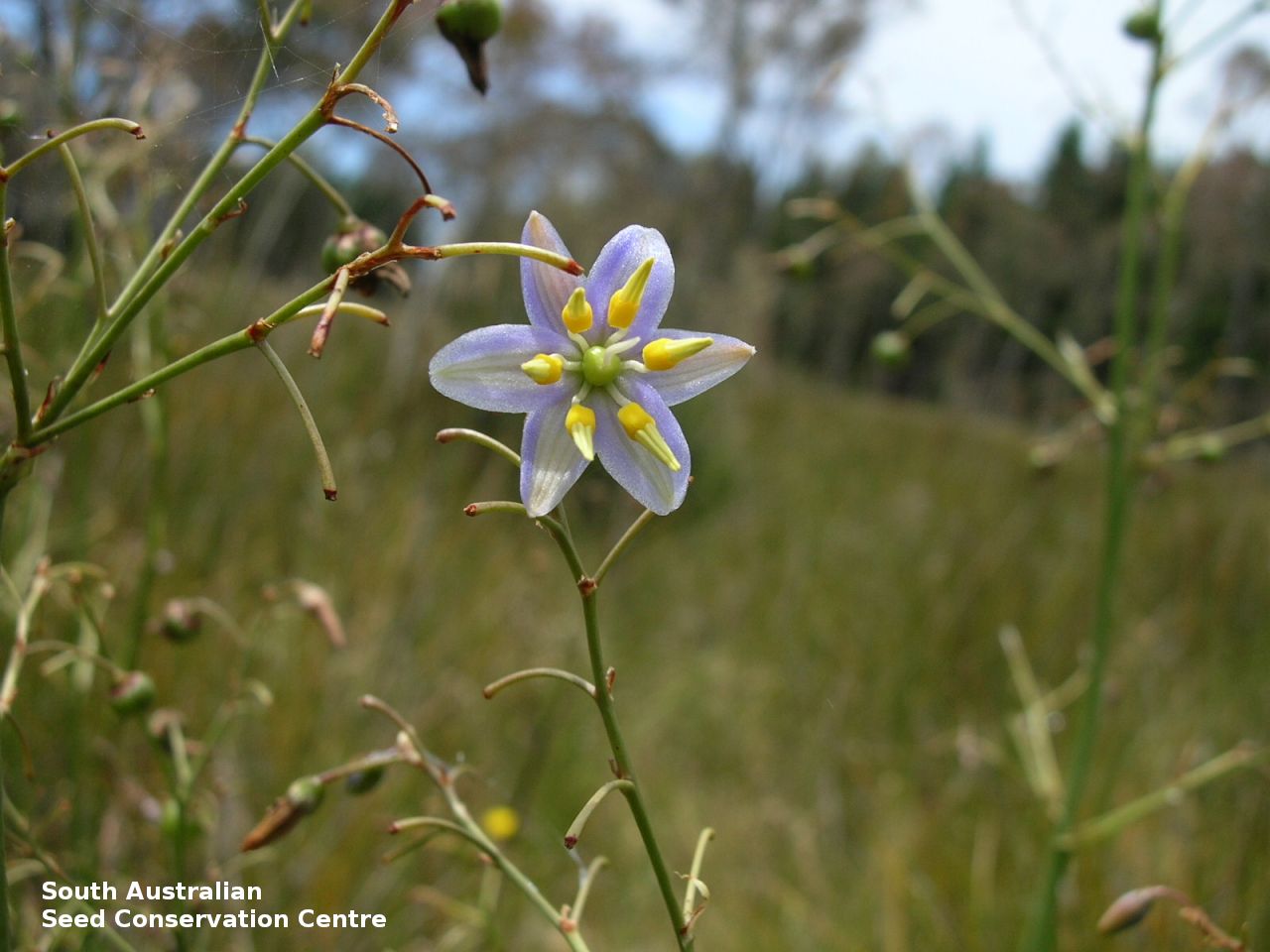
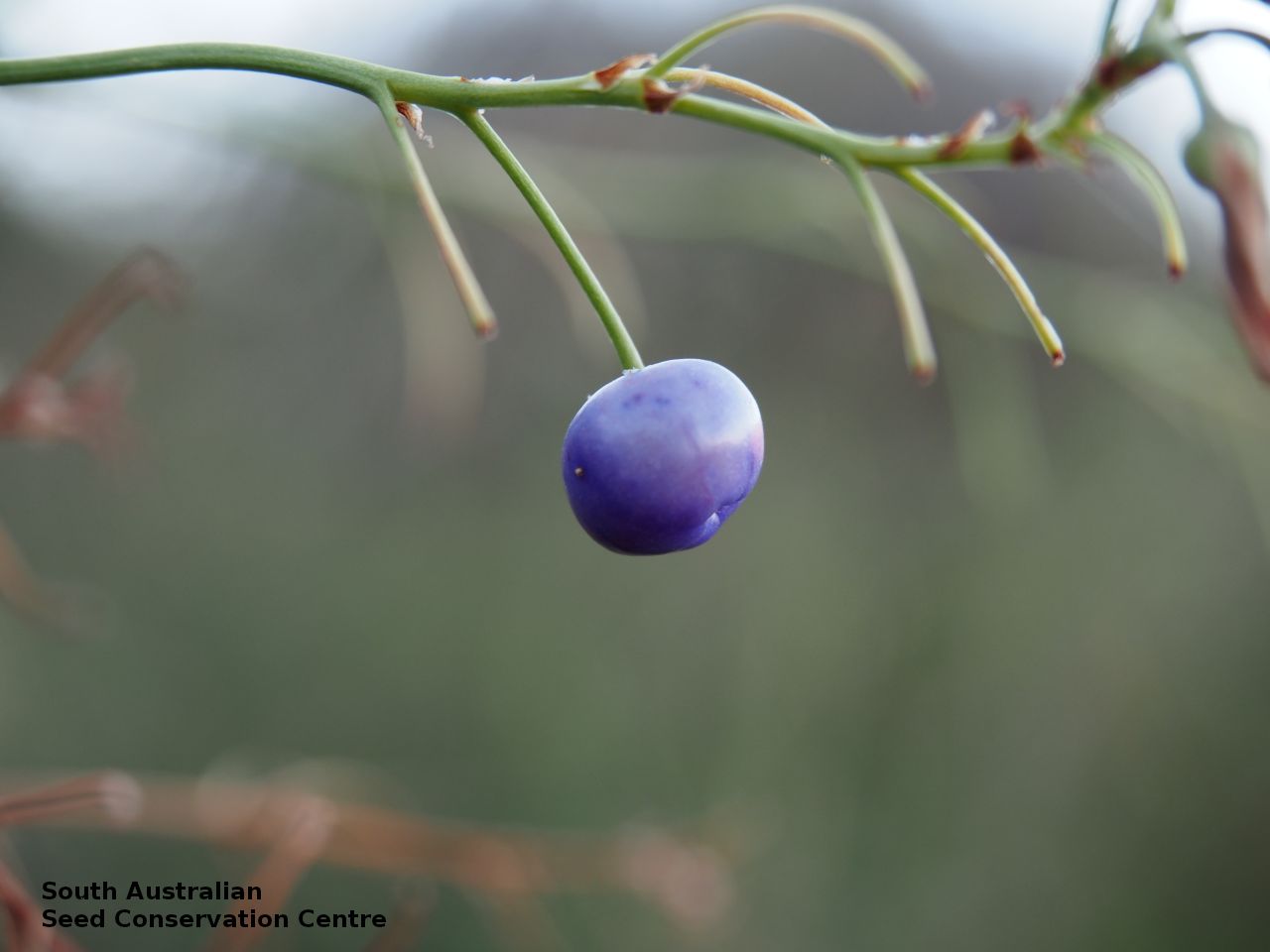
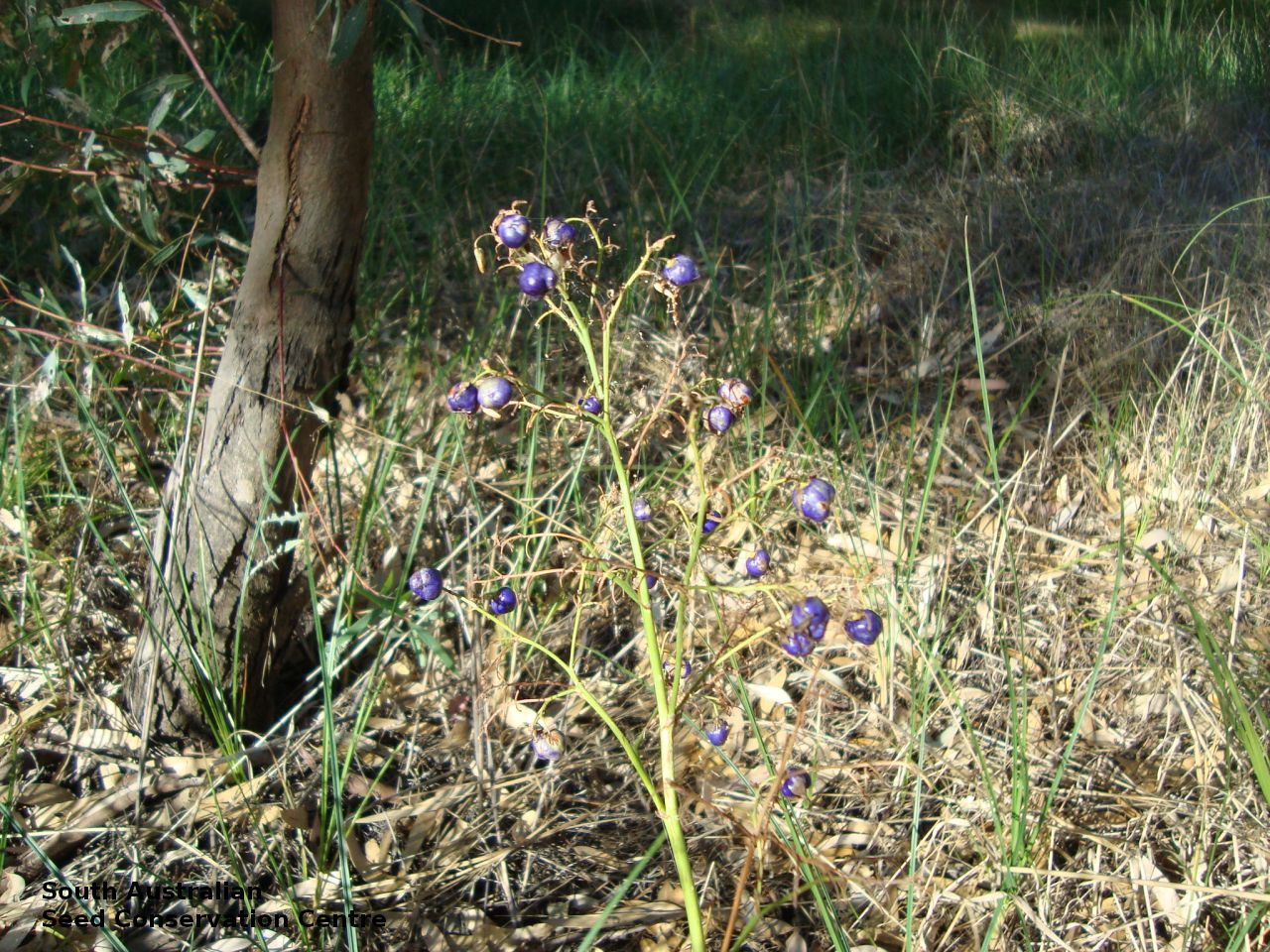
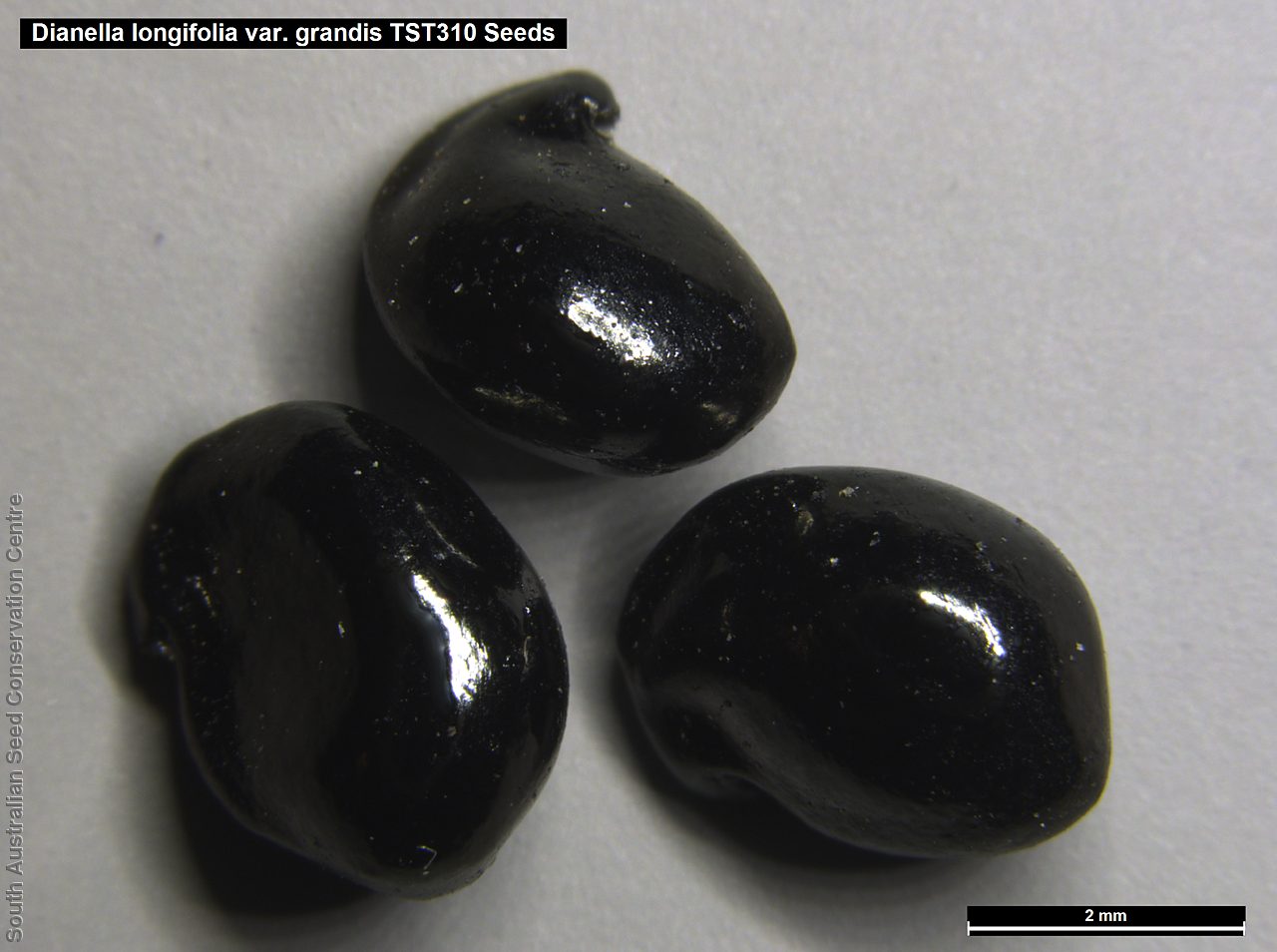
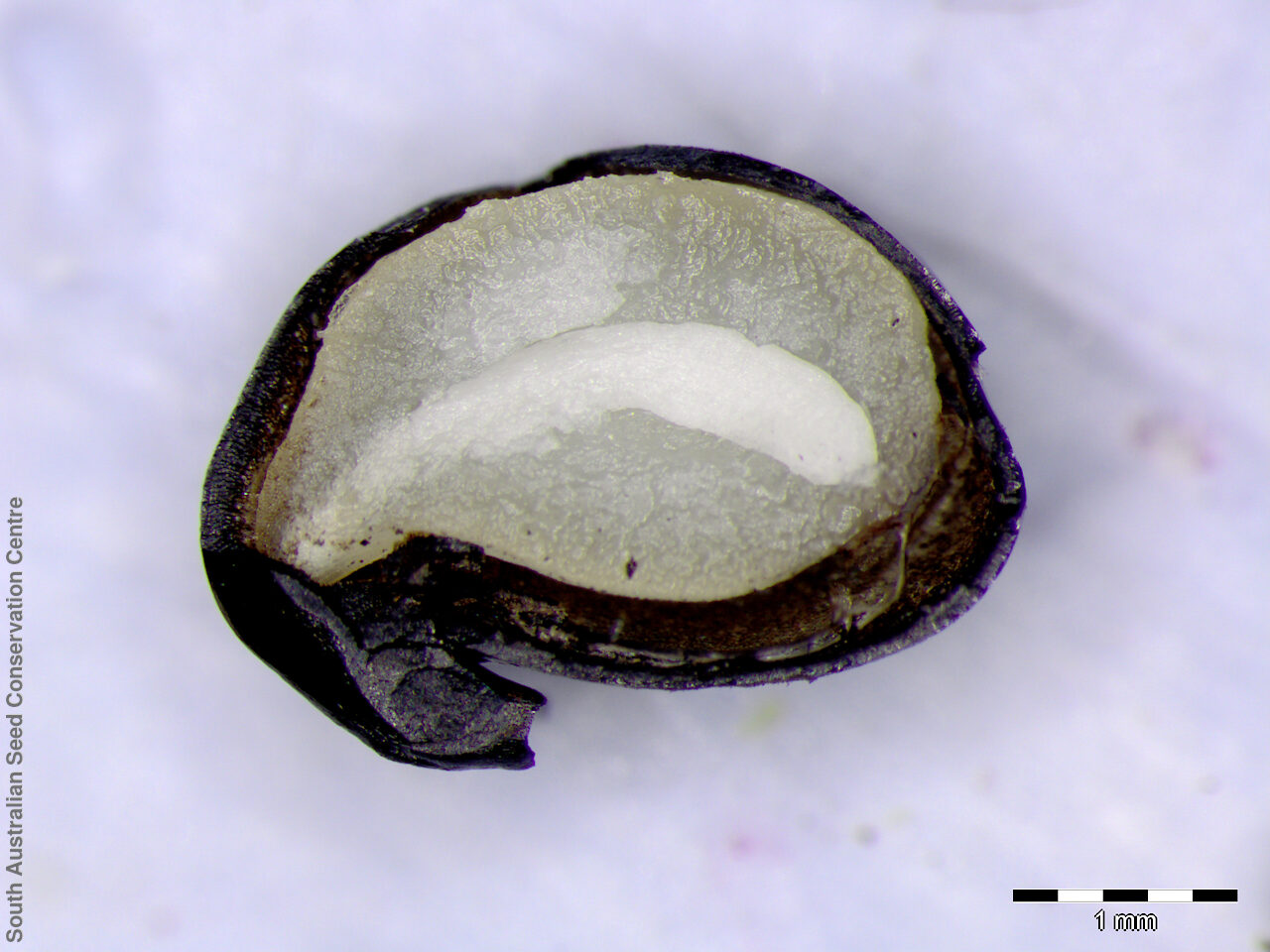
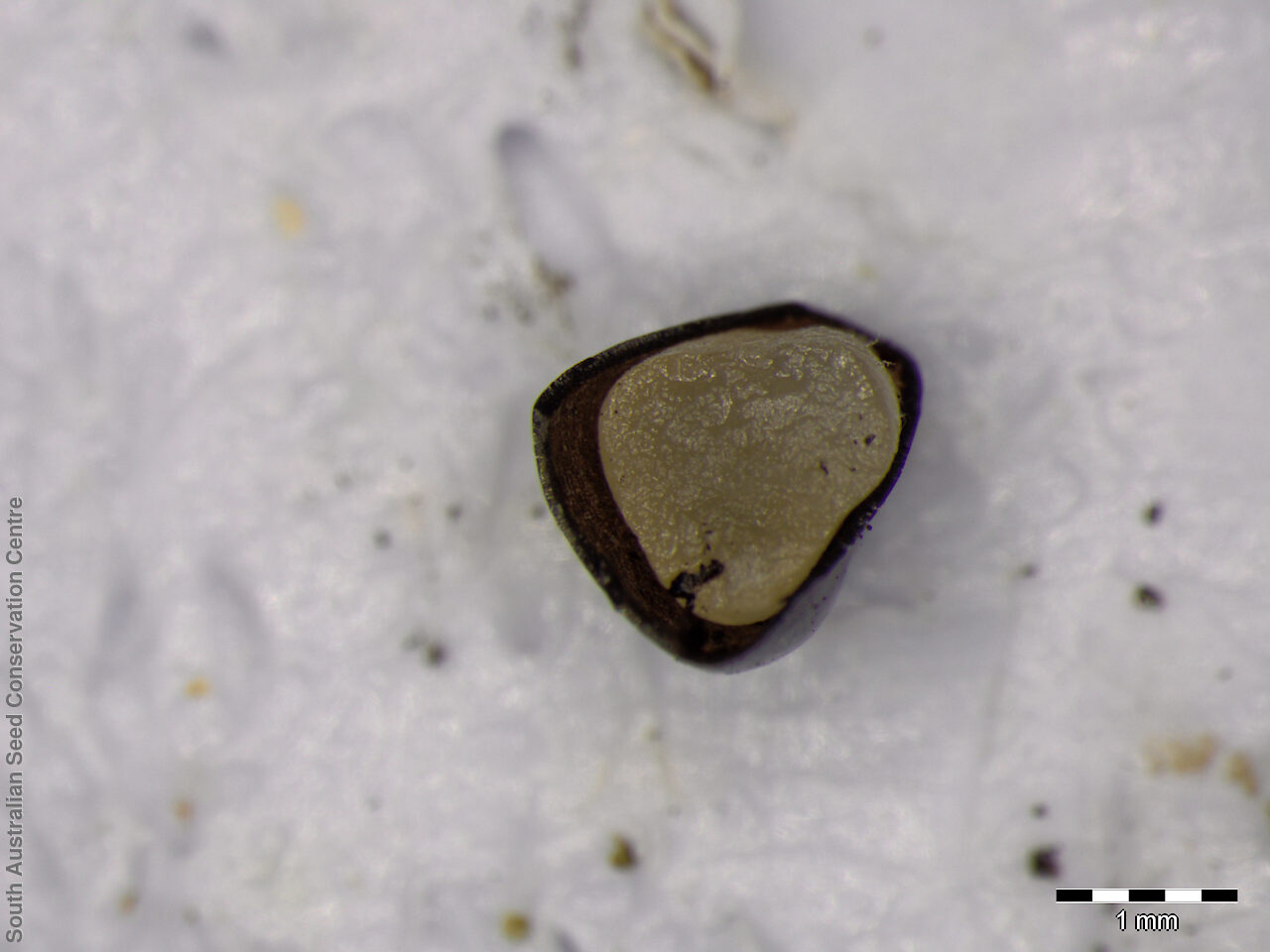

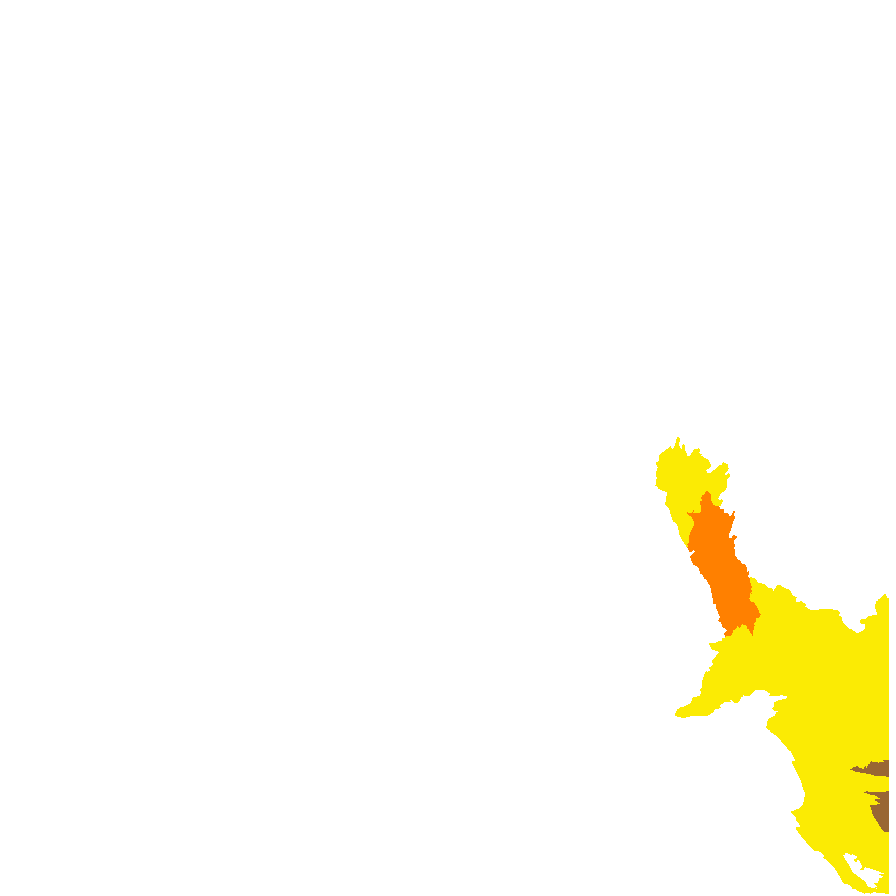
Botanical art
Prior names
Dianella laevis, partly
Common names
Yellow-anther Flax-lily
Pale Flax-lily
Etymology
Dianella is a diminutive of Diana, the virginal Roman goddess of hunting and the moon. The first-named species was found located in the French woods, thus the hunting association. Longifolia from Latin meaning long leaves. Grandis from Latin meaning large, tall or lofty, alluding to the large flower-spike.
Distribution and status
The taxonomy of the Dianella longifolia group is under revision and the distribution will change. It was previously recorded from the southern Flinders Ranges, Mount Lofty Ranges and the South-east in South Australia, growing in grassy woodland and was also recorded from Queensland, New South wales and Victoria. The taxonomy of the Dianella longifolia group is under revision and the status will change. It was previously considered rare in South Australia, Queensland and New South Wales and Uncommon in Victoria.
Herbarium regions: Murray, Southern Lofty, South Eastern, Green Adelaide
NRM regions: Adelaide and Mount Lofty Ranges, South Australian Murray-Darling Basin, South East
AVH map: SA distribution map (external link)
Plant description
The taxonomy of the Dianella longifolia group is under revision and the description will change. It was previously described as a perennial herb to 1 m high. Leaves mostly basal, pale blue-green, forming loose clumps to 60 cm high; flower-spike a panicle with pale blue flowers and much longer than the foliage. Anthers yellow.Flowering between September and January. Fruits are round deep-blue to purple berries containing numerous seeds. Seeds are shiny black ovoid seeds to 4 mm long and 3 mm wide. Seed embryo type is linear fully developed.
Seed collection and propagation
Collect seeds between November and March. Pick the fruits that are soft and purple. These will have hard black seeds inside. It is best to clean the fruit when it is fresh. Place fruits in a bucket of water and rub the fruit gently by hand to dislodge the seeds. Then use a sieve to separate unwanted material. Store the seeds with a desiccant such as dried silica beads or dry rice, in an air tight container in a cool and dry place. Seed viability is variable and can be average to high. Seeds are non-dormant, viable seed should germinate readily.
| Location | No. of seeds (weight grams) | Number of plants | Date collected | Collection number Collection location | Date stored | % Viability | Storage temperature |
|---|---|---|---|---|---|---|---|
| BGA | 560 (4.21 g) | 30 | 31-Mar-2005 | DJD123 Southern Lofty | 28-Mar-2006 | 100% | -18°C |
| MSB | 2,200 (11.46 g) | 100+ | 3-Jan-2008 | TST318 Southern Lofty | 55% | ||
| BGA | 2,400 (20.15 g) | 20+ | 3-Jan-2008 | TST310 Southern Lofty | 1-Jun-2010 | 70% | +5°C, -18°C |
| BGA | 120 (9.23 g) | 17-Mar-2010 | Mt Crawford Southern Lofty | 1-Jun-2010 | 100% | -18°C | |
| BGA | 209 | 17-Feb-2010 | Montacute CP Southern Lofty | 1-Jun-2010 | 100% | -18°C | |
| BGA | 1,080 (7.5 g) | 20+ | 24-Jan-2011 | DJD2119 Murray | 1-Jan-2012 | 70% | -18°C |
| BGA | 900 (6.930 g) | 1-Jan-2022 | Kuitpo Forest Southern Lofty | 7-Jul-2022 | 98% | -18°C | |
| BGA | 4,800 (33.164 g) | 30+ | 20-Jan-2022 | BKB53 Southern Lofty | 20-Jun-2023 | 90% | -18°C |
Number of plants: This is the number of plants from which the seeds were collected.
Collection location: The Herbarium of South Australia's region name.
% Viability: Percentage of filled healthy seeds determined by a cut test or x-ray.